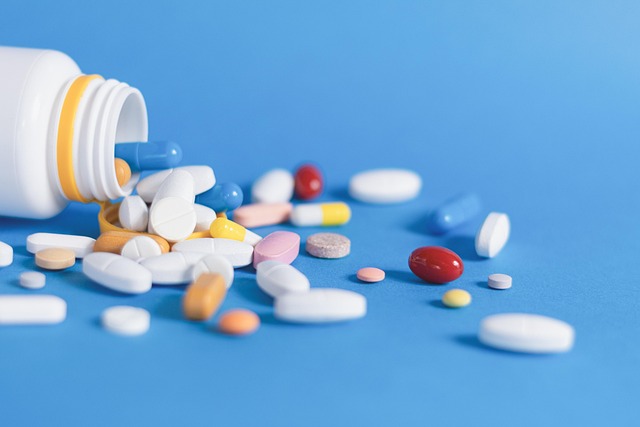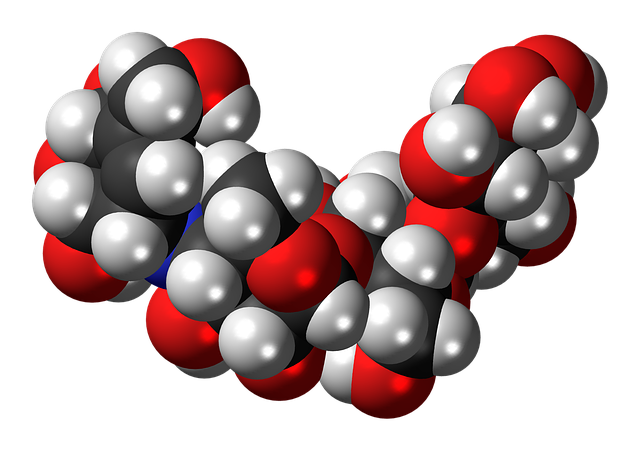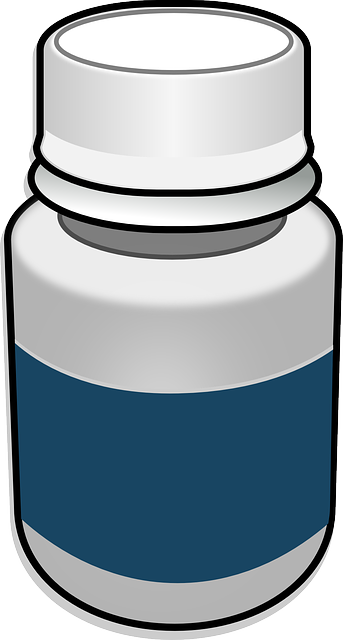GLP-1 receptor agonists (GLP-1 drugs) are a revolutionary treatment for type 2 diabetes, mimicking natural hormones to regulate blood sugar levels. They stimulate insulin production and suppress glucagon release, offering weight loss benefits and reduced hypoglycemia risk with once or twice daily dosing options. These drugs, available as injections or oral medications, provide effective blood sugar management while also exploring potential uses in heart disease, kidney failure, and neurodegenerative disorders. While side effects like nausea and dizziness are common but often temporary, more severe reactions require medical attention. Regular communication with healthcare providers ensures optimal dosages and monitors symptoms, making GLP-1 drugs a versatile option for improving type 2 diabetes patients' quality of life.
“GLP-1 receptor agonists, a groundbreaking class of medications, have transformed diabetes management. This comprehensive overview delves into the mechanisms and diverse applications of these innovative drugs. From their role in blood sugar regulation to their potential benefits for weight management, GLP-1 drugs offer a promising solution.
Discover how these agonists mimic natural hormones, improving insulin secretion and reducing glucagon release. Explore the various types, their therapeutic advantages, and common side effects. Uncover the latest research paving the way for personalized treatments. Dive into the world of GLP-1 drugs, revolutionizing diabetes care.”
What are GLP-1 Receptor Agonists?

GLP-1 receptor agonists are a class of drugs designed to mimic the effects of the natural hormone glucagon-like peptide-1 (GLP-1). This hormone plays a crucial role in regulating blood sugar levels by stimulating insulin production and suppressing glucagon release. By activating GLP-1 receptors, these agonist drugs help improve glycemic control in people with type 2 diabetes. They work by enhancing the body’s natural response to food intake, promoting feelings of satiety and reducing appetite.
These agonists are considered a game-changer in diabetes management due to their multiple benefits. They not only lower blood sugar levels but also aid in weight loss, reduce the risk of hypoglycemia, and offer a once or twice daily dosing option compared to traditional insulin injections. This convenience and efficacy make GLP-1 drugs an attractive choice for many patients living with type 2 diabetes.
How Do GLP-1 Drugs Work?

GLP-1 drugs work by mimicking the effects of the natural hormone glucagon-like peptide-1 (GLP-1), which is released in response to food intake. These drugs bind to GLP-1 receptors in the digestive system, stimulating insulin secretion when blood sugar levels are high, thereby helping to lower glucose. Additionally, they slow down gastric emptying, leading to a feeling of fullness and reduced appetite, which aids in weight management. This dual action makes GLP-1 drugs an effective treatment for type 2 diabetes and a promising option for obesity management.
Types of GLP-1 Receptor Agonists

GLP-1 receptor agonists come in various forms, each offering unique benefits for managing blood sugar levels in individuals with diabetes. These medications mimic the effects of the natural hormone GLP-1 (glucagon-like peptide-1), which is secreted in response to food intake. The main types include injectable agonists, such as exenatide and liraglutide, which are synthetic versions of GLP-1 or related peptides. These injectables have a longer duration of action compared to the oral drugs.
Oral GLP-1 drugs, like semaglutide and dulaglutide, are another category. They work by stimulating GLP-1 receptors in the gut and pancreas, promoting insulin secretion and suppressing glucagon release. This dual effect helps lower blood sugar levels without increasing the risk of hypoglycemia. These oral agonists are generally well-tolerated and offer a more convenient dosing regimen for patients.
Benefits and Therapeutic Uses

GLP-1 receptor agonists, or GLP-1 drugs, offer a range of benefits in managing various health conditions. These drugs mimic the effects of the natural hormone glucagon-like peptide-1 (GLP-1), which is produced in the gut after eating. By activating GLP-1 receptors, these drugs stimulate insulin secretion and suppress glucagon release, leading to improved blood sugar control. This makes them particularly effective in treating type 2 diabetes, helping to lower blood sugar levels and reduce the risk of complications.
Beyond diabetes management, GLP-1 drugs have shown promise in weight loss interventions. They increase feelings of fullness and decrease appetite, leading to reduced calorie intake and subsequent weight loss. This dual action not only improves metabolic health but also contributes to a healthier lifestyle. Moreover, ongoing research suggests potential therapeutic uses for GLP-1 drugs in conditions like heart disease, kidney failure, and neurodegenerative disorders, further expanding their clinical relevance.
Common Side Effects

Many people taking GLP-1 drugs experience mild to moderate side effects, which are often temporary as your body adjusts to the medication. Some common side effects include nausea, vomiting, diarrhea, and stomach pain. These gastrointestinal issues tend to be more prevalent when starting the treatment but usually improve over time. Additionally, some users may feel dizziness, headache, or fatigue.
Less frequently, GLP-1 drugs can cause more serious reactions, such as pancreatitis, kidney problems, or allergic reactions. It’s important to report any persistent or severe symptoms to your healthcare provider. They can offer guidance on managing side effects and ensure the benefits of the treatment outweigh potential risks.
Administration and Dosage

GLP-1 receptor agonists are typically administered via injection, offering a precise and controlled dosage method. The dosing regimen varies depending on the specific drug and patient needs, but it often starts with a low dose and gradually increases to optimize blood sugar control while minimizing adverse effects. Patients usually inject GLP-1 drugs once or twice daily, ensuring consistency in their meals and timings for optimal efficacy.
Doctors carefully monitor patients’ responses to adjust dosage accordingly. Regular follow-ups are essential to assess blood sugar levels, weight changes, and any potential side effects associated with GLP-1 drug therapy. This personalized approach allows healthcare providers to tailor treatments, making GLP-1 drugs a versatile option for managing type 2 diabetes and offering improved quality of life for patients.
GLP-1 Drugs vs Other Diabetes Treatments

GLP-1 receptor agonists, or GLP-1 drugs, offer a unique approach to diabetes management compared to other available treatments. Unlike traditional insulin therapy, which directly replaces the hormone’s function, GLP-1 drugs mimic the effects of the natural hormone glucagon-like peptide-1 (GLP-1) by stimulating insulin production and suppressing glucose release from the liver. This dual action not only helps lower blood sugar levels but also provides additional benefits such as weight loss and reduced cardiovascular risks, setting them apart from other diabetes medications.
While insulins and other oral hypoglycemic agents primarily focus on managing blood sugar levels, GLP-1 drugs have a broader impact. Their ability to delay gastric emptying and increase feelings of fullness contributes to weight management, a significant concern for many patients with type 2 diabetes. Moreover, the cardiovascular benefits associated with GLP-1 therapy, including reduced blood pressure and improved heart function, make it a compelling choice in treating not only diabetes but also related comorbidities.
Current Research and Future Prospects

The current research landscape surrounding GLP-1 receptor agonists is vibrant, with a focus on refining existing therapies and exploring new applications. Scientists are continually investigating ways to enhance the efficacy and duration of action of these drugs, aiming to provide better blood sugar control for patients with diabetes. One area of interest is the development of long-acting formulations, which could offer once-daily or even weekly dosing options, improving patient adherence.
Future prospects include the potential use of GLP-1 drugs in other metabolic disorders, such as obesity and non-alcoholic fatty liver disease. Ongoing studies are examining their role in weight management and cardiovascular health, suggesting a broader therapeutic spectrum beyond diabetes. Additionally, advancements in delivery methods, including novel administration routes and technology, could further revolutionize the way these medications are delivered, making them more accessible and convenient for patients worldwide.
Conclusion (Note: As per instructions, this section is not included in the outline)

GLP-1 receptor agonists have emerged as a powerful class of drugs in the management of type 2 diabetes, offering significant benefits for patients’ glycemic control. These medications mimic the effects of the natural hormone GLP-1, which stimulates insulin secretion and suppresses glucagon release, leading to improved blood sugar levels. Beyond their primary role in diabetes treatment, GLP-1 drugs are also being explored for their potential cardiovascular benefits and weight management applications.
The popularity and success of this class can be attributed to their dual action on both glucose metabolism and appetite regulation. This multi-faceted approach presents an exciting opportunity to improve patient outcomes and quality of life. As research continues, the future looks promising for GLP-1 drugs as a cornerstone in comprehensive diabetes care, potentially paving the way for new therapeutic possibilities and enhanced patient management.
